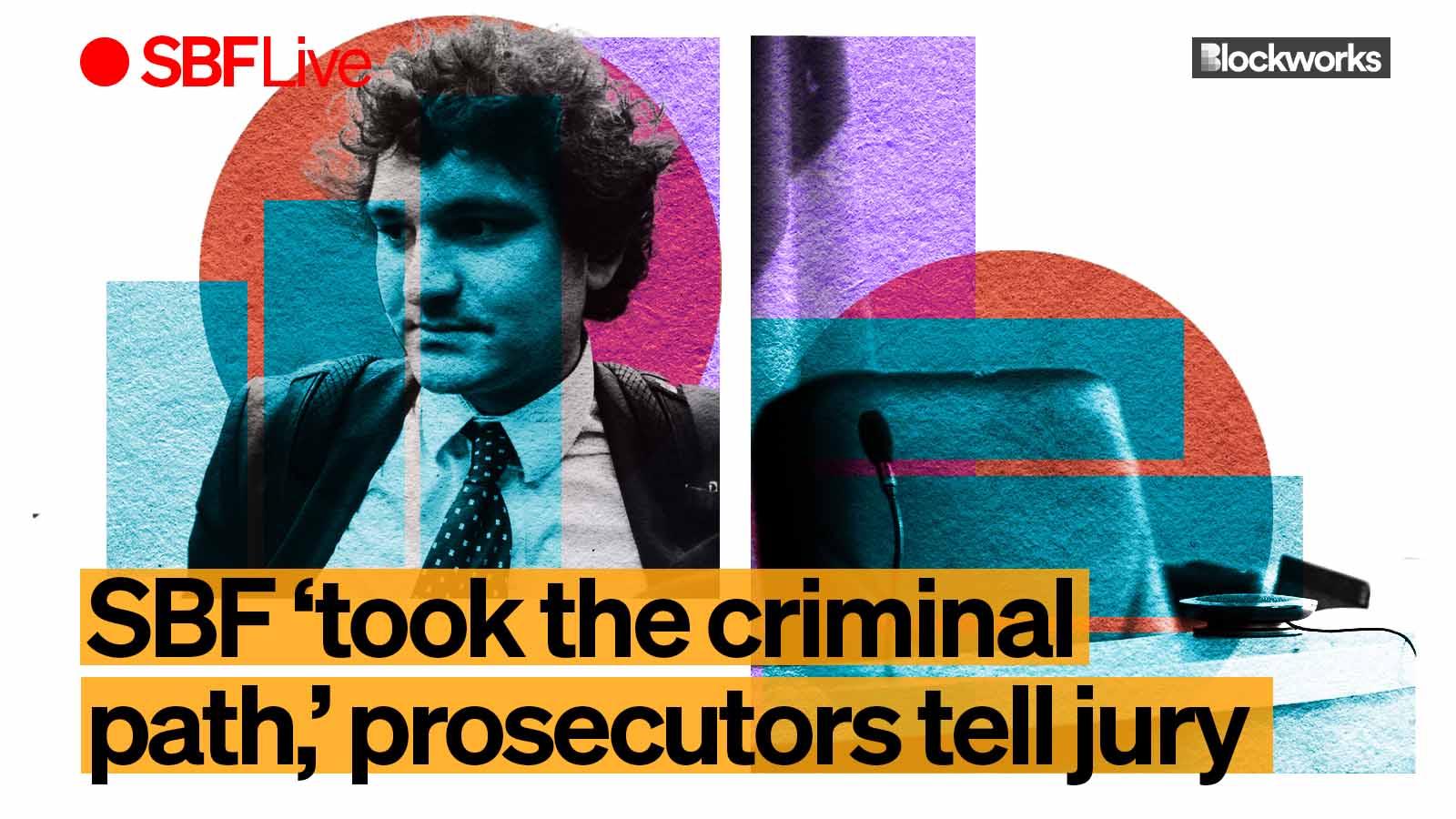Sam Bankman-Fried ‘lied to you’ on the stand, prosecutors tell jury: SBF trial
“It’s stealing, plain and simple,” prosecutors tell jury about misappropriated customer funds

Artwork by Crystal Le
As Sam Bankman-Fried’s criminal trial comes to a close in Manhattan, prosecutors began making their final pleas to the jury Wednesday.
In a two-and-a-half-hours-long (so far) closing argument, the prosecution called back a familiar narrative: Bankman-Fried knowingly and intentionally stole from customers and defrauded investors.
“Where did the money go? What happened? Who was responsible?” Prosecutor Nicolas Roos said at the start of the government’s closing arguments. “You know the answers to those questions.”
Read more: He said, she said: Testimonies from SBF and Caroline Ellison aren’t matching up
Roos told the jury that the government already knows who is responsible, dramatically pointing a finger at Bankman-Fried — “This man.”
Roos’s closing statements centered around a six-point presentation on key times in Bankman-Fried’s career when he had to make a choice. In each of these occasions, Roos told the jury, Bankman-Fried consciously decided to commit fraud.
Each of Roos’s points were punctuated with government exhibits and excerpts from the trial transcripts. In particular, Roos pointed out what he referred to as a “stunning” admission by Bankman-Fried during his cross examination, when the defendant admitted that he had known in 2020 that Alameda Research had distinct liquidation rules from other FTX customers.
Roos also noted that any time that documents referred to Alameda as having an unlimited line of credit on FTX, the jury should think about it as “unlimited stealing.”
Throughout his closing statement, Roos consistently said that Bankman-Fried perjured himself on the stand.
Read more: White-collar defense lawyer weighs in on SBF trial: ‘If I had to place a wager…’
He noted the 104 times that Bankman-Fried said the phrase “I don’t recall,” telling the jury that the defendant’s testimony was “uncomfortable to hear.” He added that Bankman-Fried was a “different person” during cross-examination than he was during direct, where he was able to remember much more about his tenure as FTX CEO.
Bankman-Fried, who faces seven counts of federal fraud and conspiracy, appeared calm. His attorneys were busy taking notes throughout the statement. It will be the defense’s turn this afternoon; the government said they have roughly another 30 minutes of their presentation.
His parents, after clocking a rare absence from the courtroom Tuesday, were not in attendance Wednesday for the government’s closing statement, but did make a quick appearance in the morning to check in with Bankman-Fried. Joe Bankman gave his son a smile.
Bankman left the courtroom about 20 minutes into his son’s cross-examination Tuesday. Barbara Fried was not in her usual row Tuesday, where the two have sat throughout the trial.
Read more: Day 2 on the stand — and Sam Bankman-Fried recalls next to nothing
The jury, while initially engaged, seemed to lose interest around 45 minutes into Roos’ presentation. On Wednesday, there were another three jurors who could not make it through the trial without a nap.
The case looks on track to head to the jury on Thursday. Judge Lewis Kaplan asked the jury to inform him if there were any members that would be unable to stay late Thursday evening, adding that they will receive dinner if needed.
“[I] cannot vouch for the quality,” Kaplan added, prompting some chuckles from the gallery and jury box.‘It’s stealing, plain and simple,’ prosecutors tell jury about misappropriated customer funds
Get the news in your inbox. Explore Blockworks newsletters:
- The Breakdown: Decoding crypto and the markets. Daily.
- 0xResearch: Alpha in your inbox. Think like an analyst.






